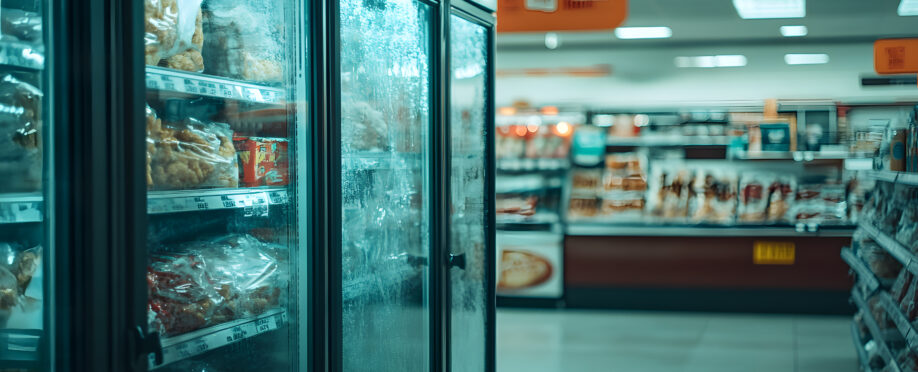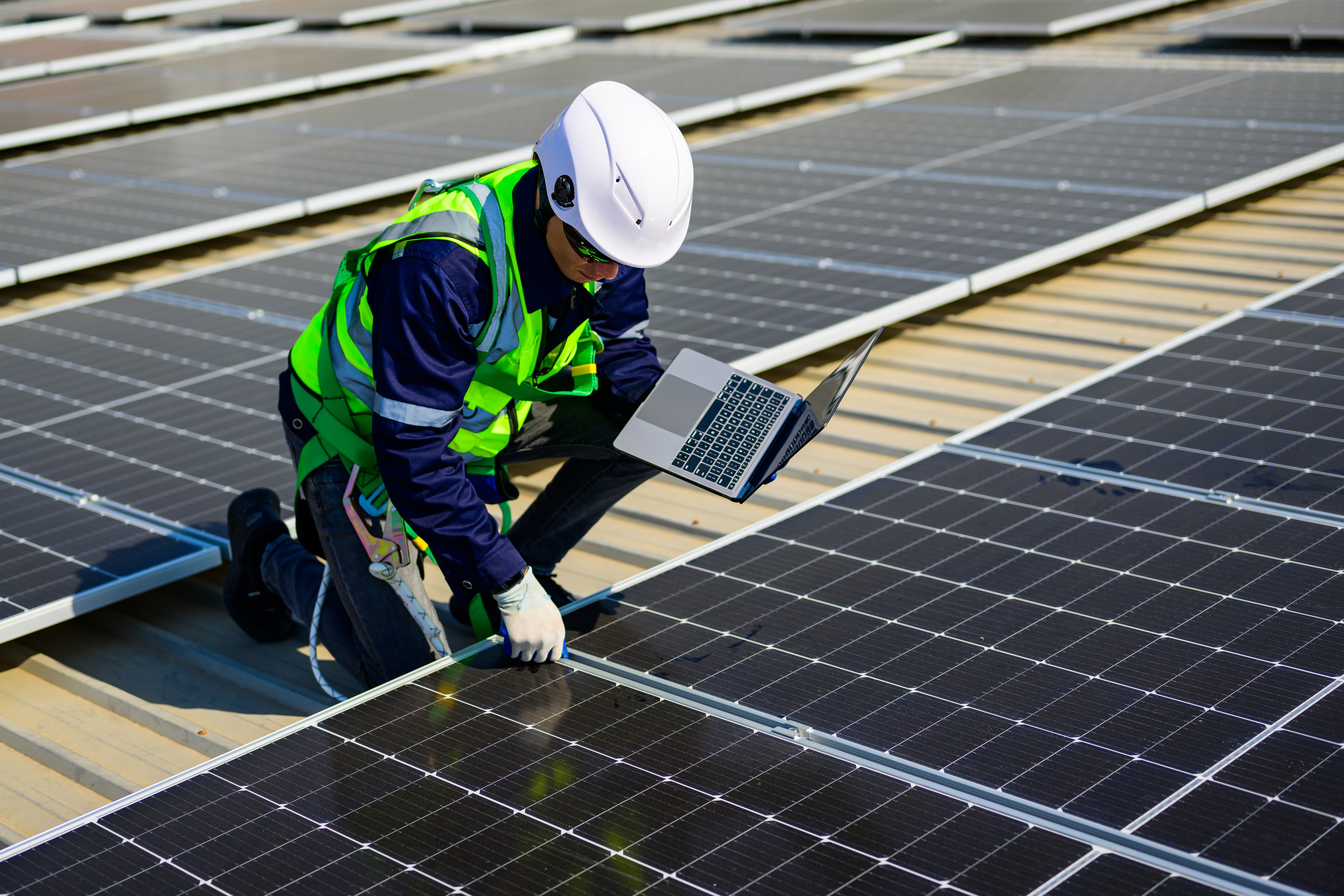
Deferred maintenance may seem like an easy way to cut costs in the short term, but it almost always leads to bigger problems and expenses down the road. For instance, a heat pump or air conditioner over 10 years old may increase energy consumption by as much as 20%, leading to elevated heating and cooling costs.
For retailers overseeing extensive real estate portfolios, putting off necessary repairs and system upgrades can have major consequences — from compromised food safety to inflated operating budgets.
“While it might appear that deferred maintenance saves money and time compared to a preventative approach, in the end you’ll end up spending more on service calls, parts replacements, and shorter asset life spans,” George Campbell, Director of Technical Services at City US.
In this article, we’ll break down exactly what deferred maintenance is, highlight the sizable impact it has on grocery stores and convenience stores, and provide actionable strategies that retail facility managers can employ to get ahead of looming issues.
Whether you oversee a few dozen stores or a national portfolio, a proactive approach to maintenance is key to efficient operations, safe environments, and maximized assets.
What Does Deferred Maintenance Mean?
Deferred maintenance refers to the practice of postponing or delaying repairs and maintenance tasks that are necessary to properly maintain a building and its equipment, systems, and infrastructure. Rather than proactively addressing maintenance needs through scheduled preventive measures, issues are allowed to persist until equipment fails or problems arise.
The Effects of Deferred Maintenance
Deferred maintenance touches nearly every area in a retail operation. Facility managers who neglect operational systems will put the long-term financial viability of their store at risk. But investing in preventive maintenance can have the opposite effect. US Department of Energy studies have found that companies can save between 5 percent and 20 percent each year on energy bills by prioritizing maintenance.
Impact on operations
Operations are the heartbeat of any retail store. Maintenance issues can have a serious impact on critical systems, such as lighting, HVAC, and refrigeration, which has lasting negative effects. When these systems falter or fail, employees struggle with managing the critical functions of their job, reducing their morale and productivity while impacting their level of service to customers.
Health and safety risks
For facility managers running a grocery or convenience store with perishable items, deferred maintenance is not just an operations issue but a health and safety issue.
Federal estimates show that there are about 48 million cases of foodborne illnesses each year. If a refrigeration system fails, for even just a few hours, the health risks of selling spoiled food increase dramatically.
Keeping refrigeration systems in good shape not only helps reduce the chances of customers contracting foodborne illnesses but prevents health code violations and spoiled inventory as well.
Cost implications
“As tempting as it may be to reduce short-term expenses,” George advises, “continually putting off necessary repairs will inevitably lead to early equipment failure and increase overall costs.”
As tempting as it may be to reduce short-term expenses, continually putting off necessary repairs will inevitably lead to early equipment failure and increase overall costs.George Campbell, Director of Technical Services at City US
As George points out, emergency repair service calls, especially those outside of regular business hours, will likely be more expensive than any routine preventive maintenance. What’s more, unexpected downtime disrupts operations, negatively impacting sales.
|
Is deferred maintenance a liability? Deferred maintenance is a very risky liability in the long run. In the short term, it may help reduce capital expenditures, but the liabilities will begin to add up over time as repairs are ignored. The reliability, efficiency, and lifespan of assets will be compromised, which will result in reduced system performance and become a liability over time. |
Customer perception
When customers notice peeling paint, water damage, and suboptimal refrigeration, their confidence in a retail business can quickly erode. Even longtime customers will eventually get tired of the obvious deferred maintenance and take their business elsewhere. Creating memorable, welcoming retail environments starts with investing in preventative maintenance.

Strategies for Overcoming Deferred Maintenance
The most effective way to combat deferred maintenance is through proactive, preventive measures rather than reactive approaches after problems arise. Facility managers can employ several key tactics to get ahead of maintenance issues.
Implement a proactive maintenance schedule
Creating a robust preventive maintenance program is one of the most straightforward ways facility managers can handle maintenance. Make sure to include these items on your preventive maintenance checklist:
- Create detailed tasks for routine upkeep
- Develop timelines for the frequency of each task
- Cover every operational system, including electrical, HVAC, plumbing, and more
“Consistently executing scheduled maintenance effectively eliminates deferred issues,” adds George Campbell.
Budget for regular repairs
What may seem like small, deferrable repairs today often escalate into major expenses down the road. Rather than viewing maintenance as an optional expense that can be cut if budgets run tight, retailers should account for regular upkeep in operating budgets. Building in dedicated facilities maintenance line items leads to fewer deferred issues over the long run.
Use technology to monitor equipment
Advanced technologies like intelligent building solutions allow retailers to monitor assets remotely and in real time.
For example, City’s proprietary solution, SPARK+, continuously collects data on real-time energy usage of food and beverage equipment. Machine learning algorithms analyze this data to detect inconsistencies and predict potential failures before they occur. Facilities teams, including dedicated energy analysts, then receive automated mobile alerts about any identified issues, thereby allowing problems to be addressed immediately.
“The beauty of predictive technology is it allows you to take steps today to keep equipment in good working order, instead of letting issues build up over time,” adds George Campbell. This prevents small maintenance needs from evolving into costly emergency repairs that require extended downtime.
The beauty of predictive technology is it allows you to take steps today to keep equipment in good working order, instead of letting issues build up over timeGeorge Campbell, Director of Technical Services at City US
By implementing these preventive maintenance best practices, retailers can actually prevent deferred issues, optimize equipment lifecycles, and ensure properly functioning stores.
Overcome Deferred Maintenance Challenges
Retailers who end up continuously putting off repairs will eventually run into serious issues that result in extensive system overhauls. Facility managers can overcome this pitfall by taking a preventative approach that incorporates consistent, proactive maintenance processes.
As part of our industry-disruptive, data-driven facilities management solutions for food retailers, City helps FM teams implement the latest innovative practices to improve service quality, lower costs, and meet sustainability goals — and it all starts with a proactive approach. Learn more about City’s Integrated Facilities Management services or contact our team today to get started.


 2016: City US is established in North America, in partnership with Southeastern Grocers (SEG), servicing over 750 supermarkets across 7 southern states.
2016: City US is established in North America, in partnership with Southeastern Grocers (SEG), servicing over 750 supermarkets across 7 southern states. 1985: Willie and Susan Haughey establish City Refrigeration Holdings (UK) Ltd in Glasgow, UK.
1985: Willie and Susan Haughey establish City Refrigeration Holdings (UK) Ltd in Glasgow, UK. 2009: City Australia launches in Melbourne, in partnership with Coles, servicing over 700 supermarkets across the country.
2009: City Australia launches in Melbourne, in partnership with Coles, servicing over 700 supermarkets across the country. 2015: City Asia launches in Kuala Lumpur, Malaysia, in partnership with Dairy Farm, servicing over 205 supermarkets across the region.
2015: City Asia launches in Kuala Lumpur, Malaysia, in partnership with Dairy Farm, servicing over 205 supermarkets across the region.